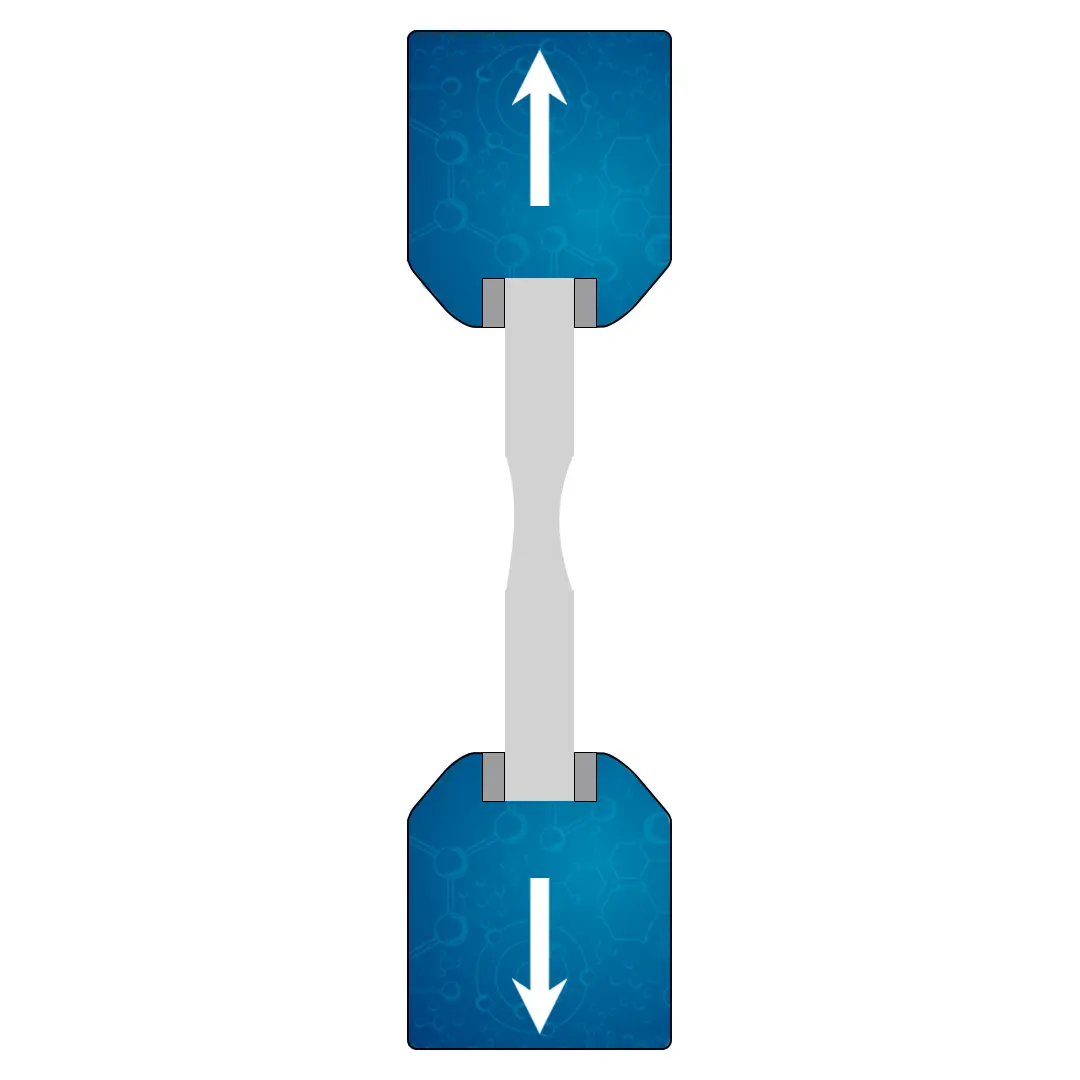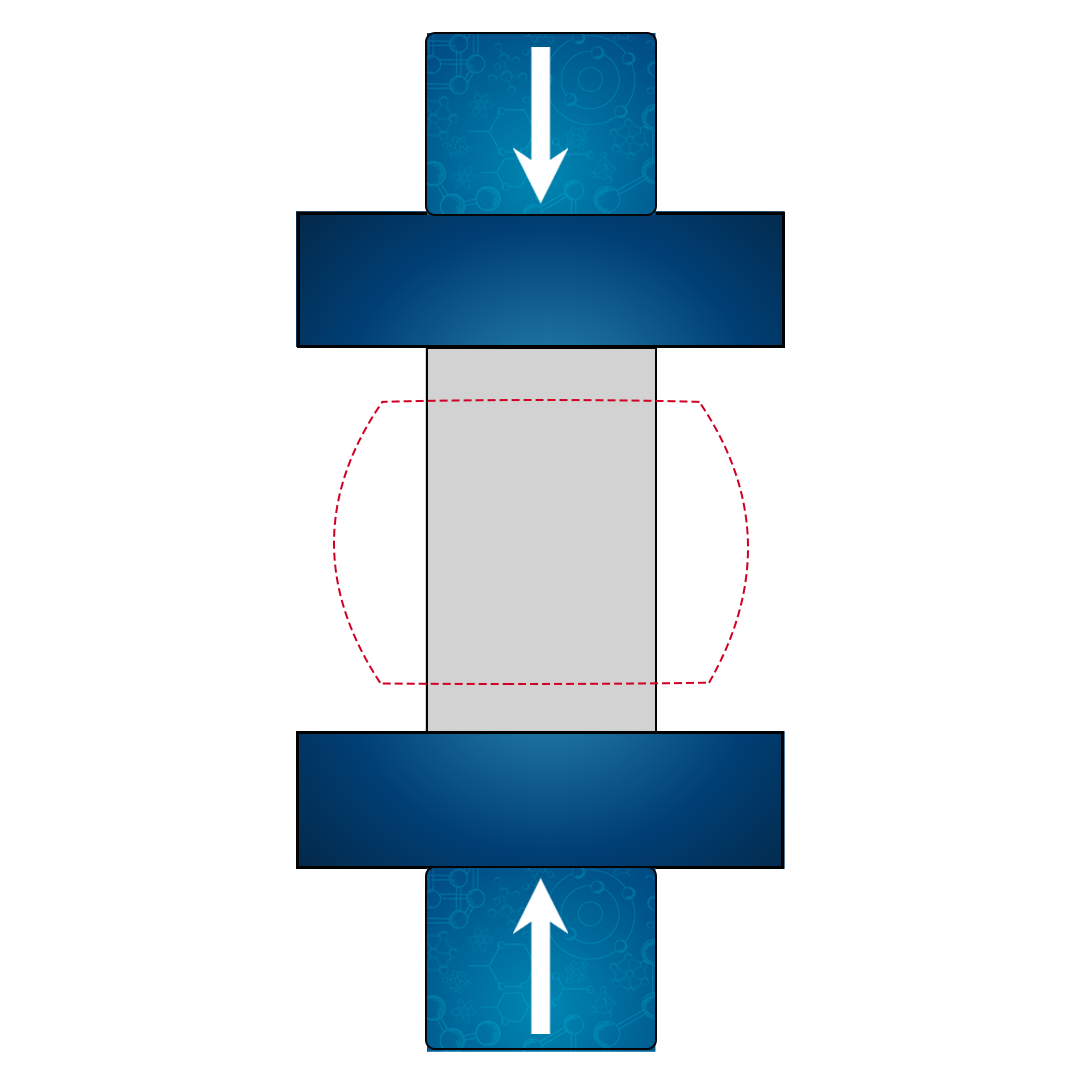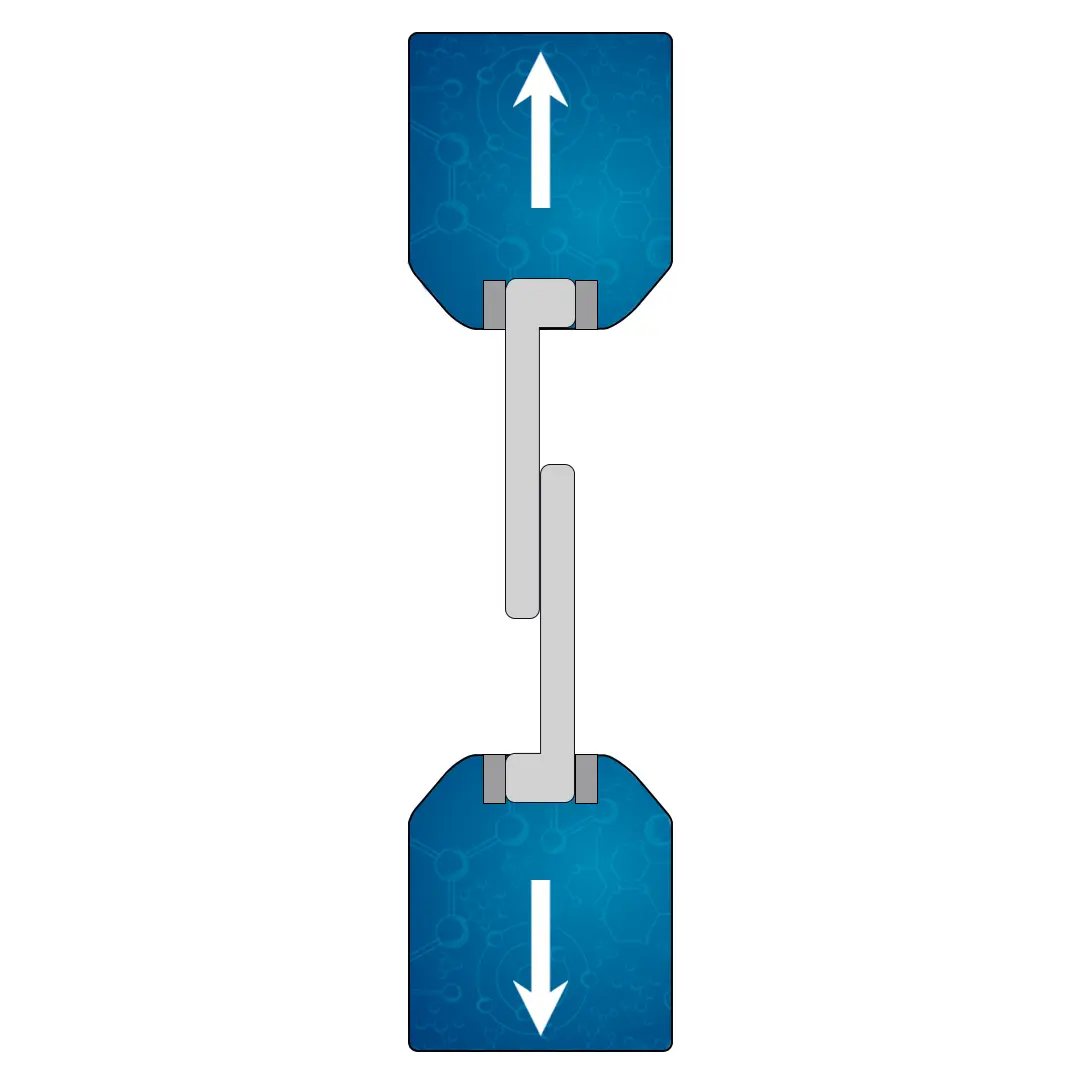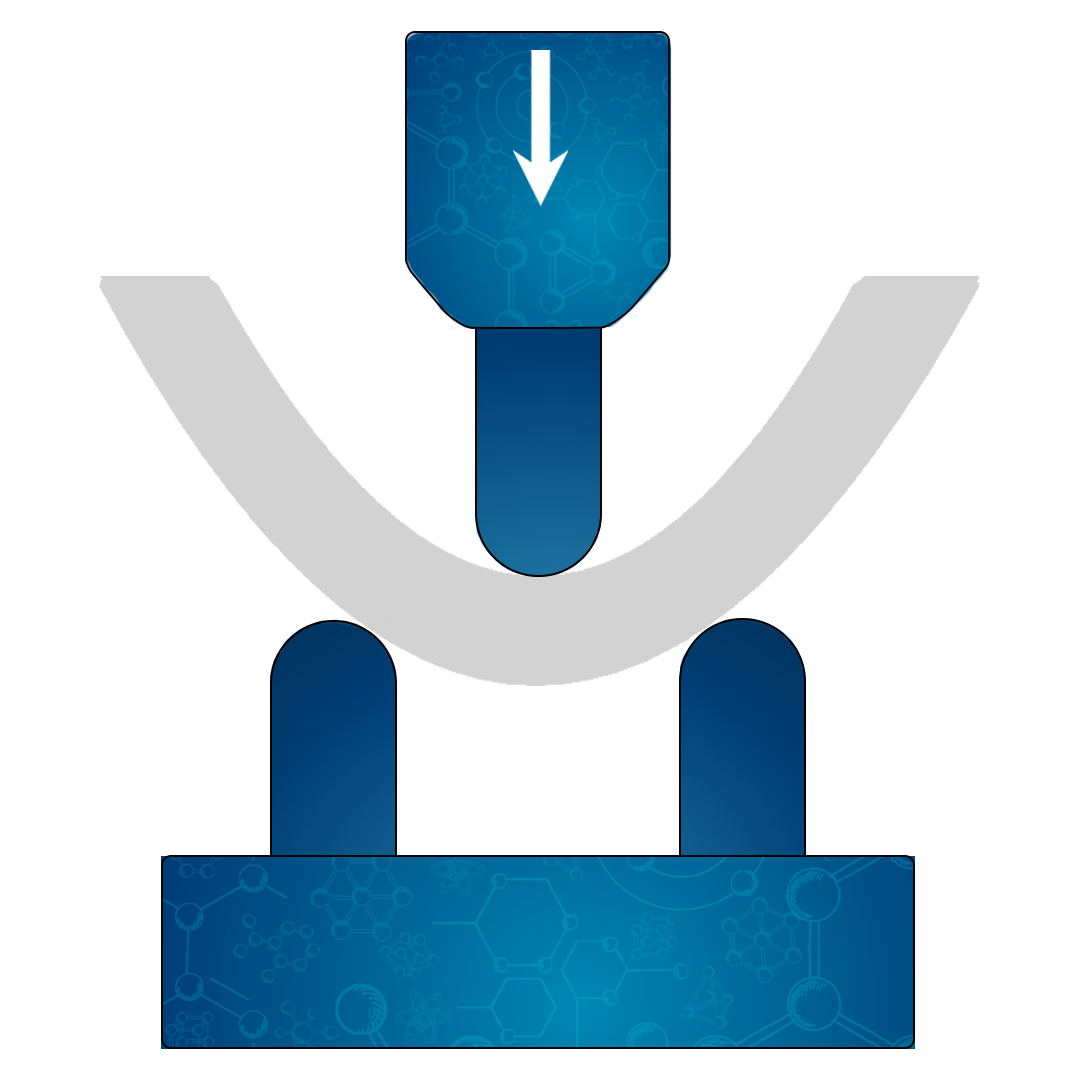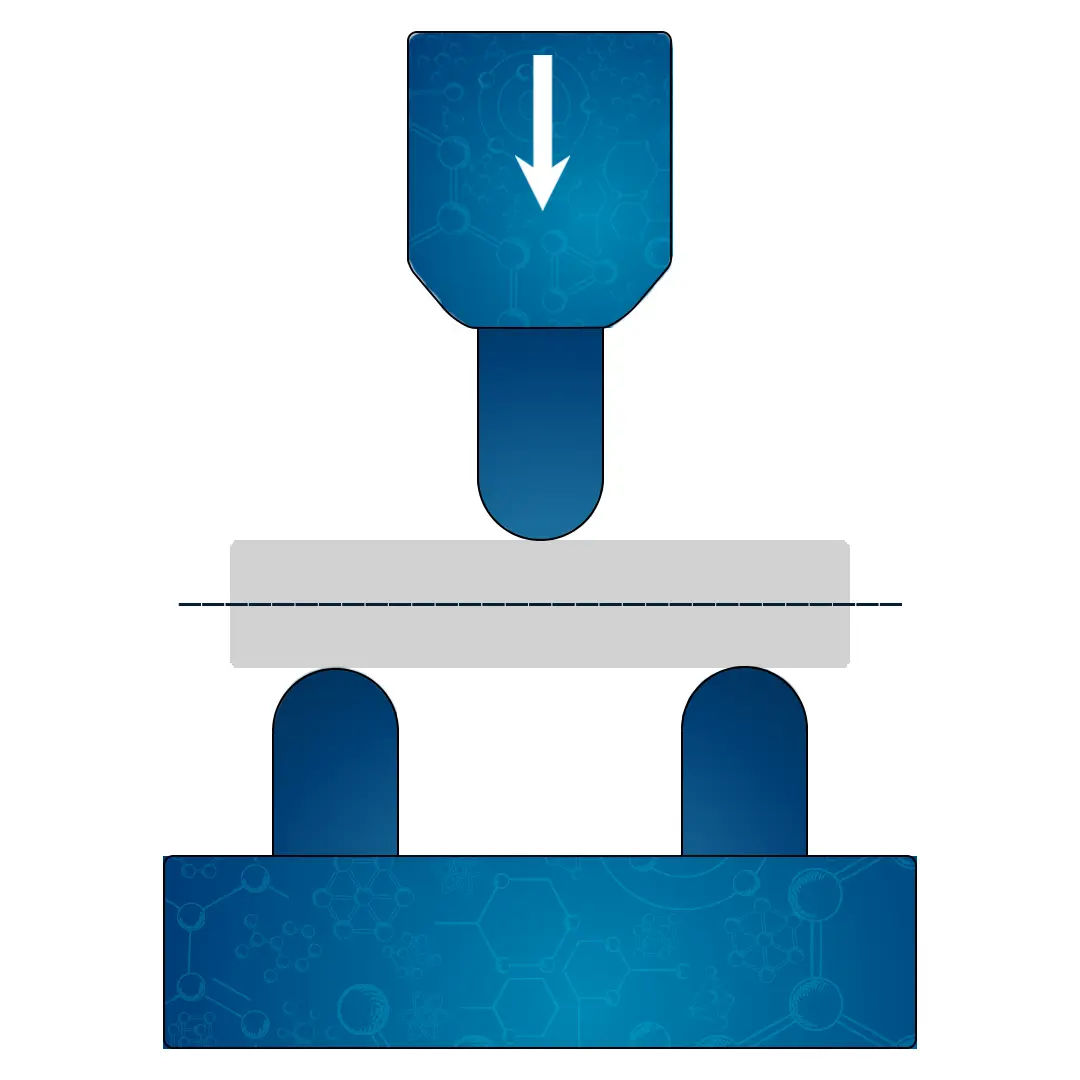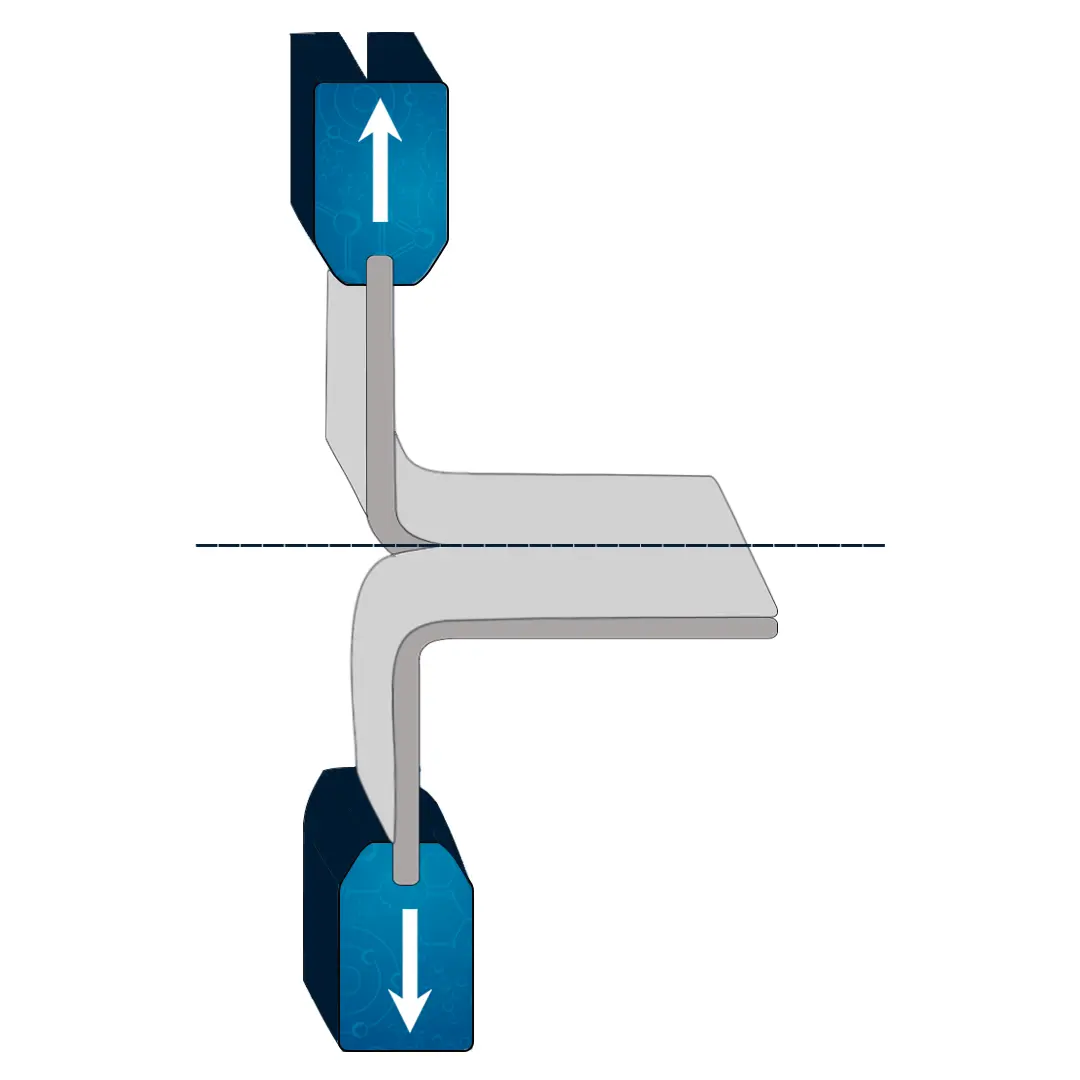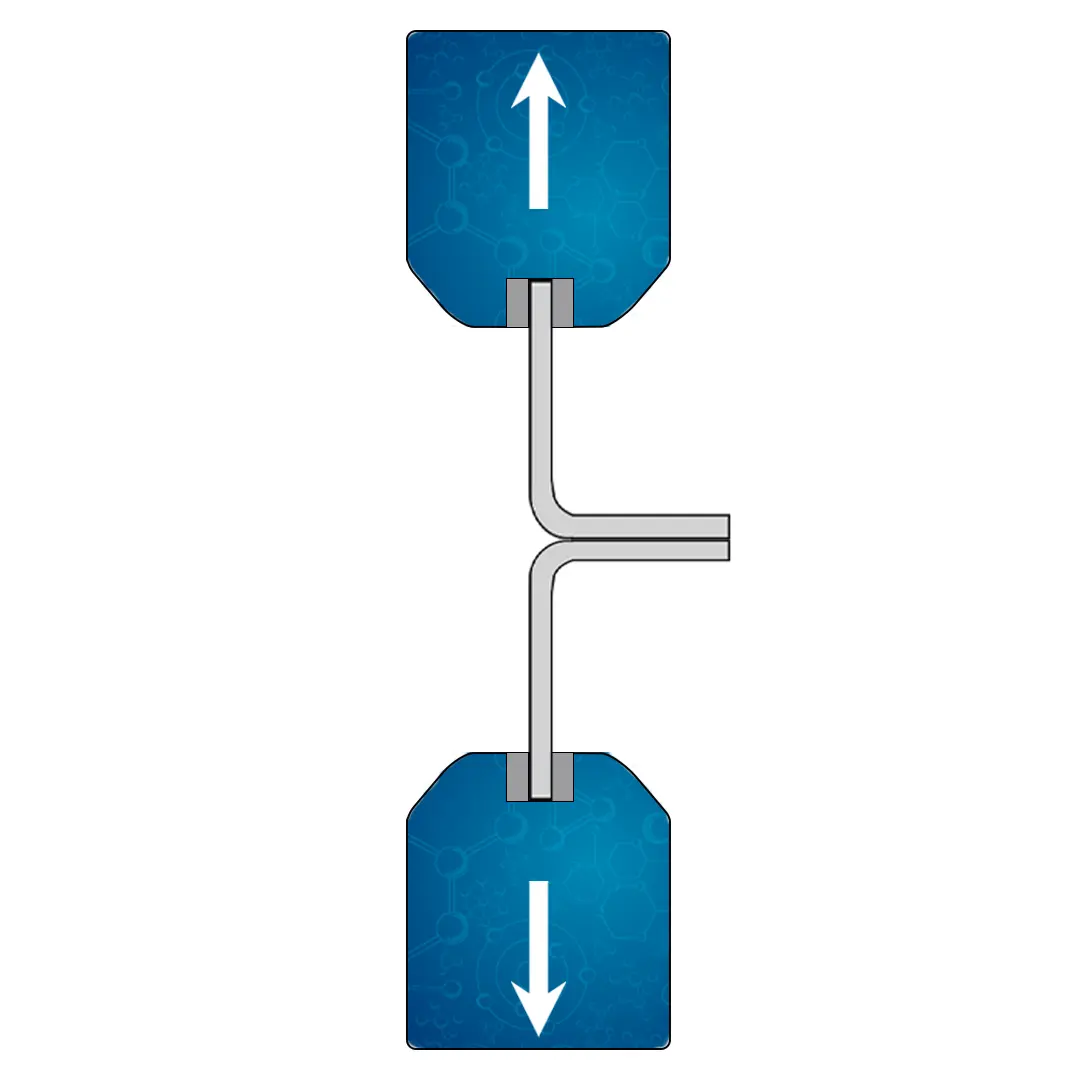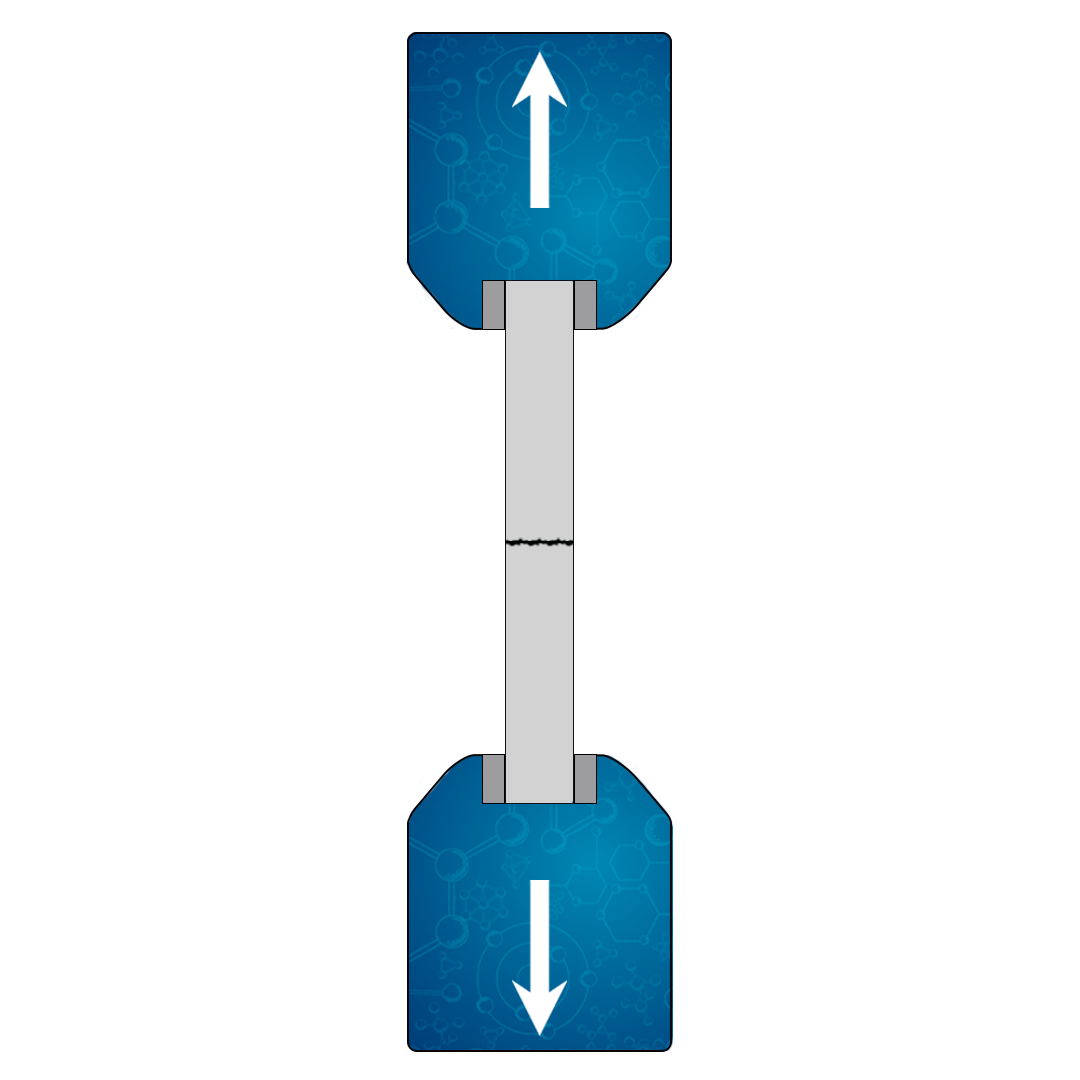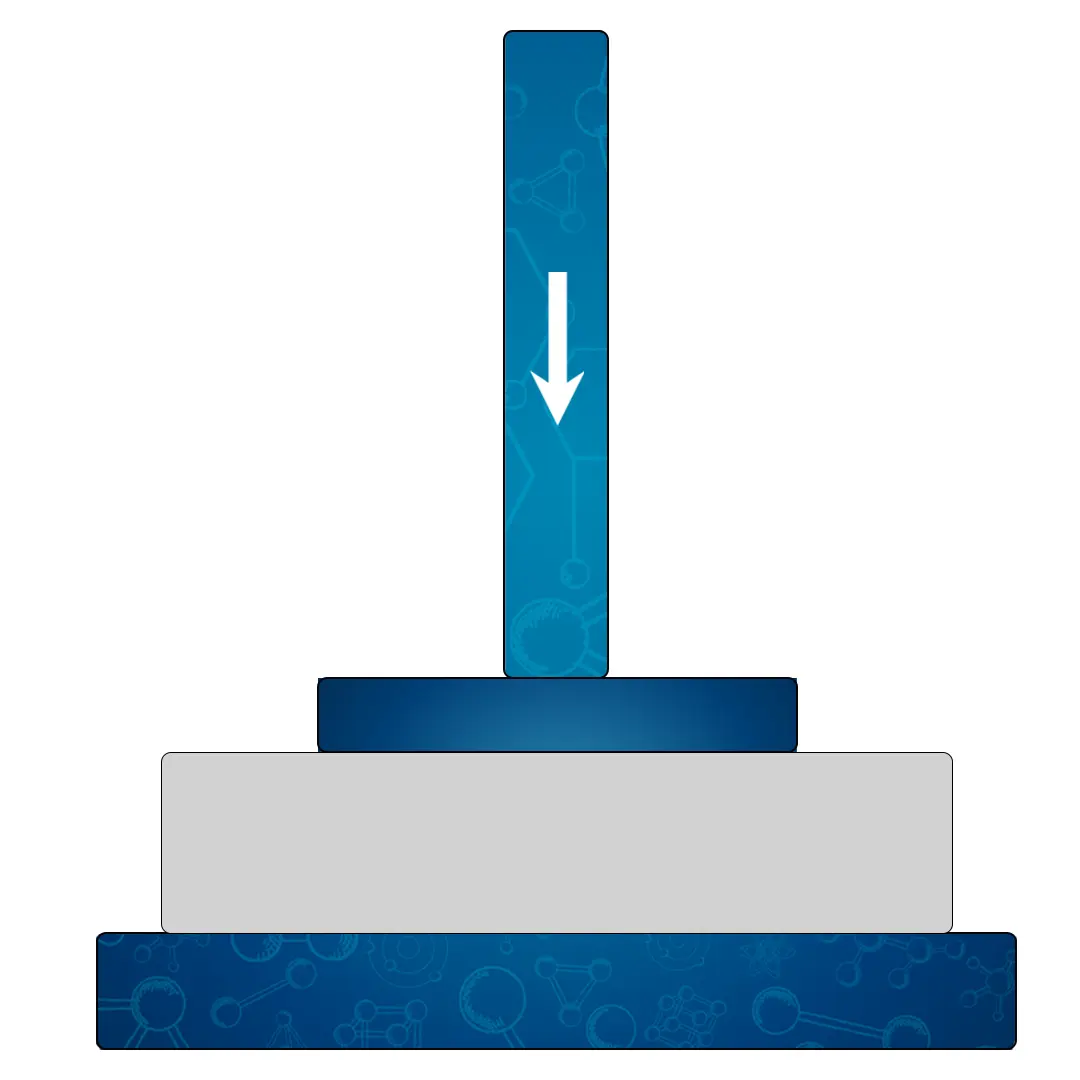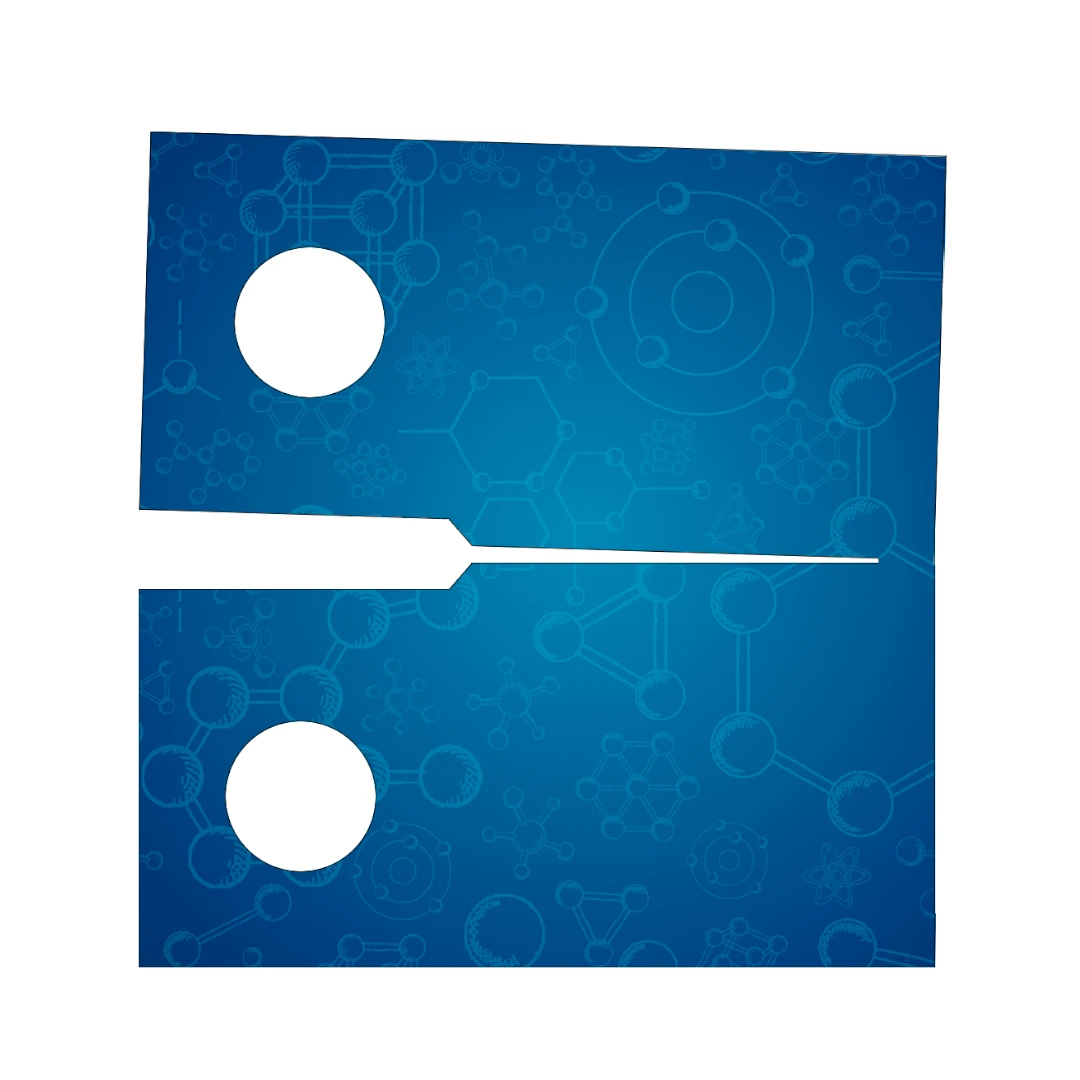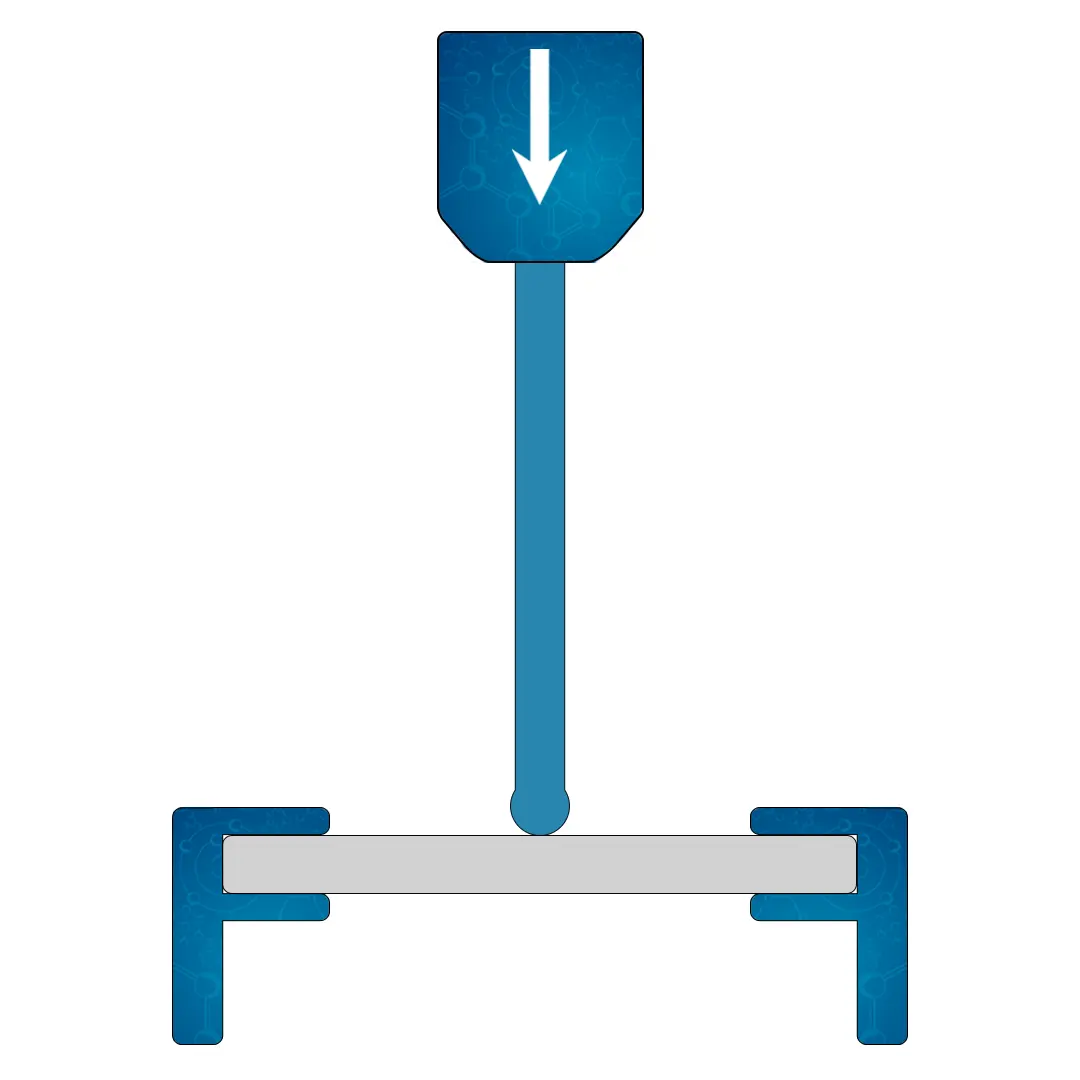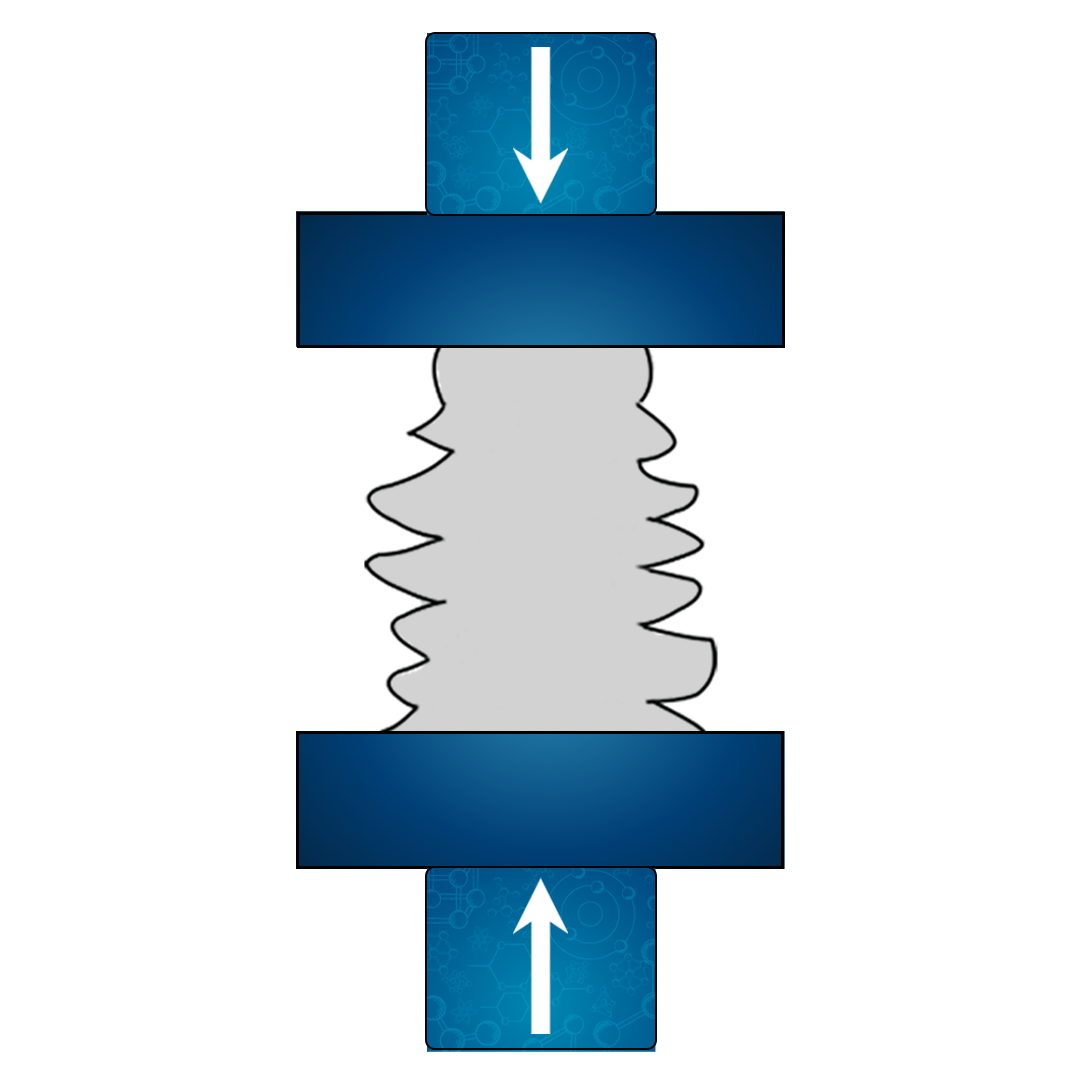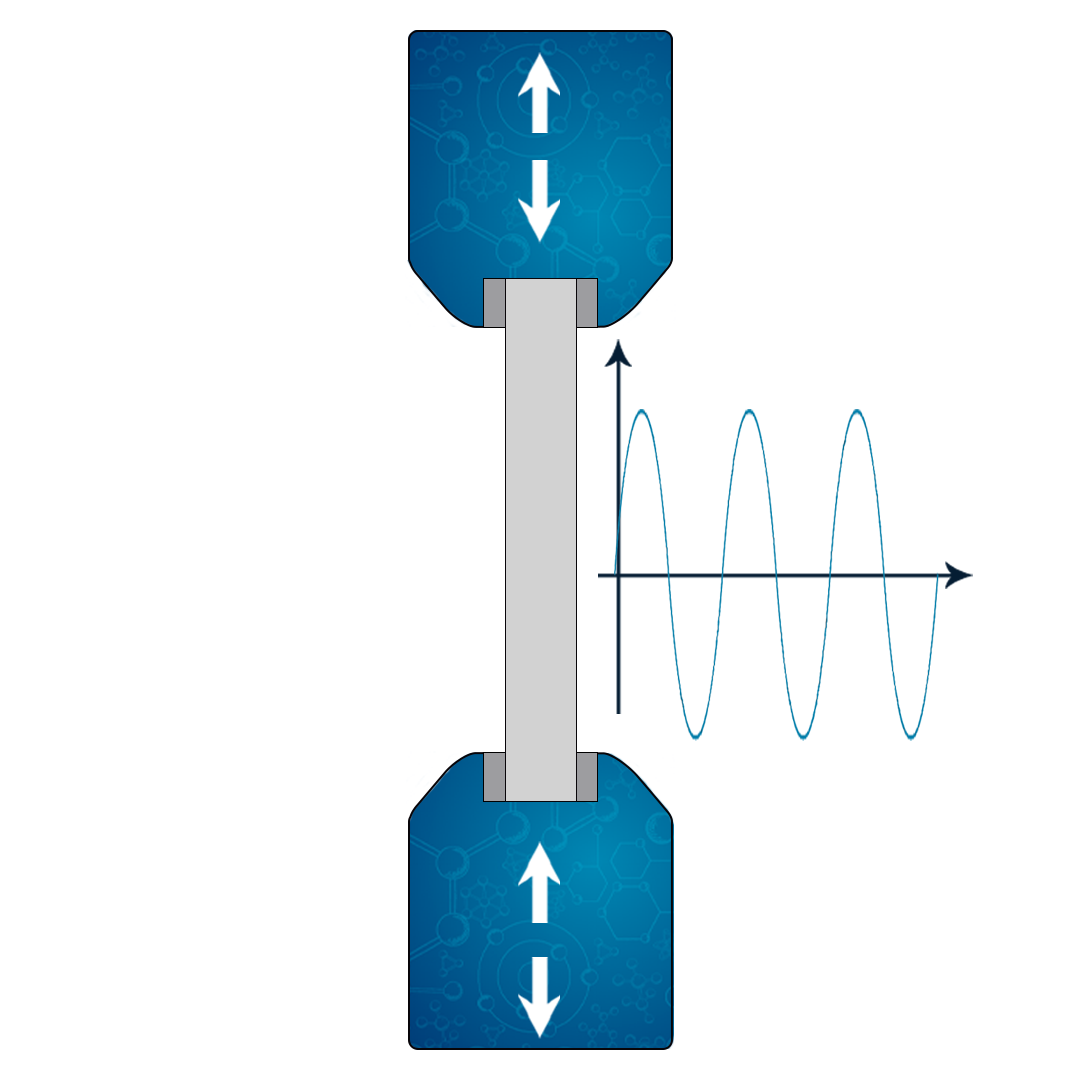Shear Testing: A Detailed Approach to Methods and Applications
In this article, we will discuss in detail the shear testing, one of the main types of mechanical tests used in engineering and materials science. We will explore several topics related to this test, from its definition and importance to its main advantages, properties obtained and application examples in different types of materials.
In addition, we will discuss data collection, the equipment used, the specimen, the performance standards and additional relevant information about the shear test. By the end of this article, you will have a comprehensive understanding of this test and its application in the field of engineering and materials science.
In the following text, you will find a summary of the topics that will be addressed in this article.
What is the Shear Test?
Shear testing is an essential method in the field of materials science and engineering used to determine the shear strength or resistance of a material to deformation. This test is a measure of a material’s ability to withstand forces that can cause the internal structure of the material to slide against itself.
Shear tests are conducted on various types of materials including metals, polymers, ceramics, composites, and even soil and rocks in geotechnical engineering. The importance of this test is evident in many industries, including automotive, aerospace, civil construction, and product design, as it helps in predicting the material behavior under shear stress.
Shear testing can be performed in several ways, but the common procedure involves the application of force tangentially or parallel to the surface of the test sample until deformation or fracture occurs. The applied force and the resultant deformation are recorded to calculate the shear strength or shear modulus of the material.
Understanding the shear properties of a material is crucial as it provides valuable insights into the material’s mechanical behavior, durability, and suitability for specific applications. In real-world scenarios, many materials are subjected to combinations of different stress types, including shear stress. Thus, knowing how a material will respond under such conditions is vital in ensuring the safety and efficiency of structures or products made from these materials.
Examples of devices for shear testing
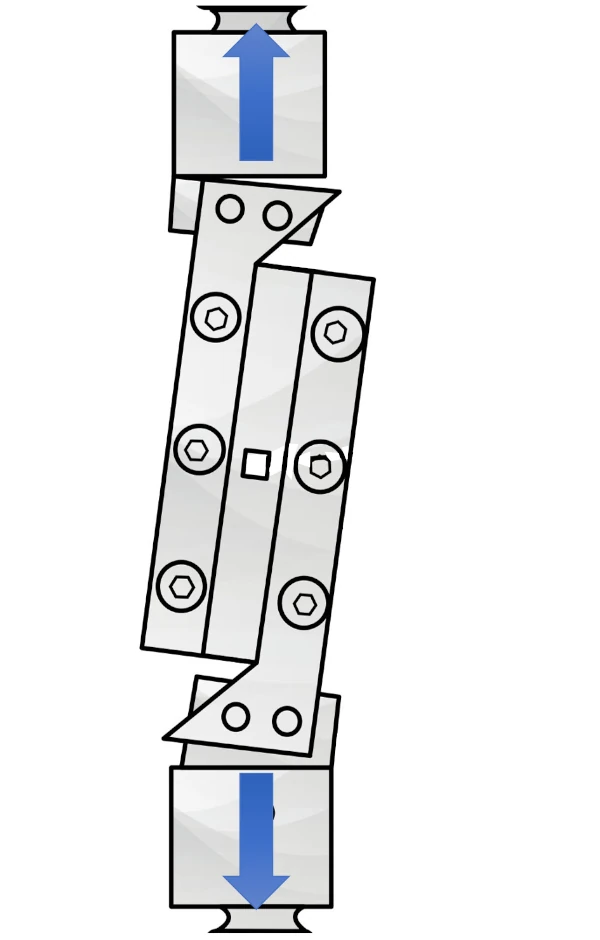
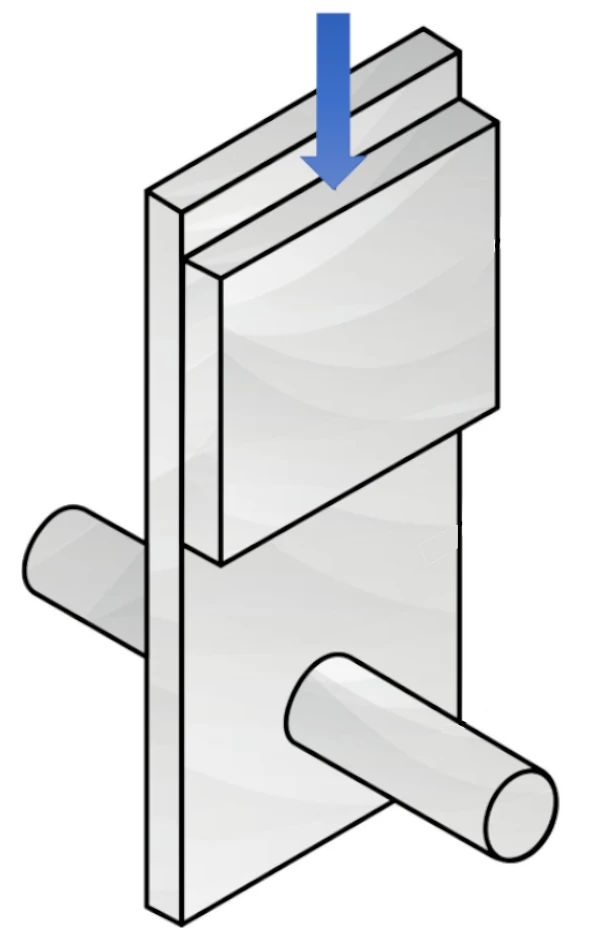
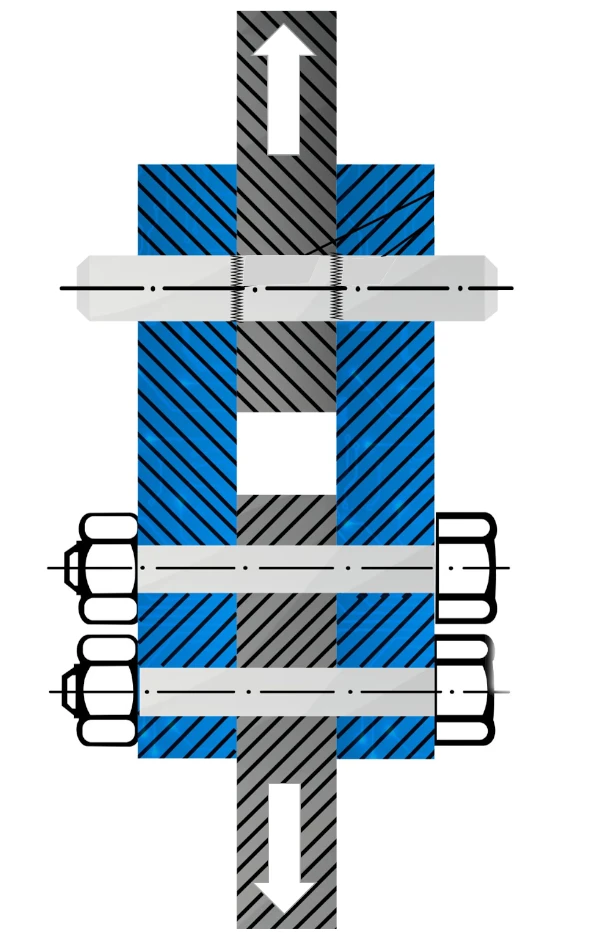
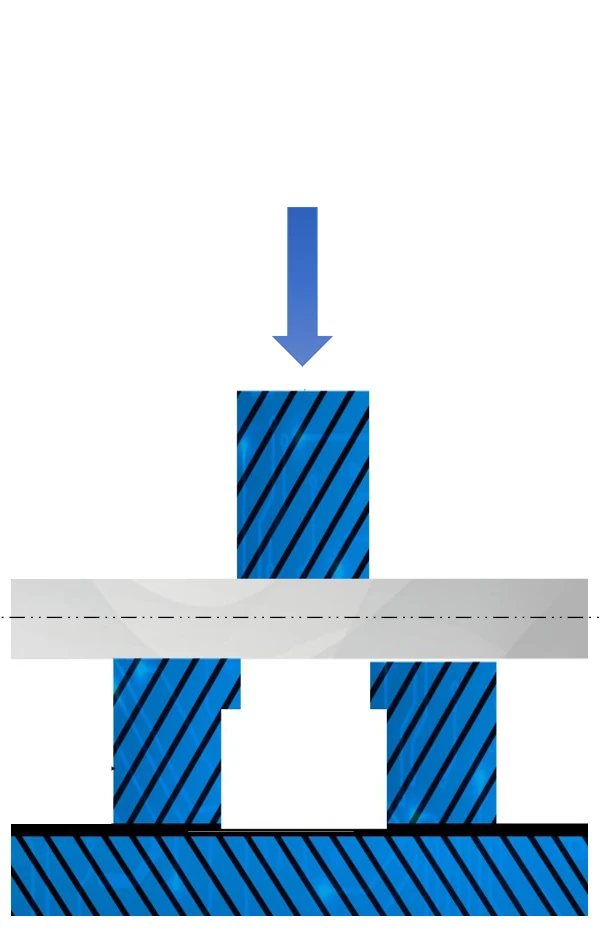
What is the importance of Shear Testing?
Shear testing is of paramount importance in the field of material science and engineering, as it helps determine a material’s behavior under shear stress—internal sliding forces acting parallel to each other. Understanding the shear properties of a material is crucial for various reasons:
- Designing and Manufacturing: Engineers use shear strength data to make informed decisions during the design and manufacturing process. These decisions range from choosing the right material for a specific application to designing structures or components to withstand certain load conditions.
- Quality Control: Shear testing is used in quality control to ensure that materials meet specific strength standards before they are utilized in products or structures. Regular testing can detect any inconsistencies or defects in the materials, preventing the use of inferior quality materials.
- Safety Assurance: Knowing the shear strength of materials is critical for safety, especially in industries like construction, aerospace, and automotive. If a material cannot withstand the forces it’s subjected to, catastrophic failure can occur. Shear testing helps prevent such incidents.
- Product Development and Improvement: Shear testing plays a significant role in research and development. It helps scientists and engineers understand how changes in a material’s composition or manufacturing process can affect its shear properties, aiding in the development of new materials and improvement of existing ones.
- Failure Analysis: When a material or product fails, shear testing can be part of the forensic investigation, helping to determine whether shear stress was a factor in the failure.
- Adhesive and Bonding Evaluation: Shear testing is used extensively to test the effectiveness of adhesives. In particular, lap shear tests can assess the strength and durability of adhesive bonds, which is vital in industries like automotive and aerospace.
Shear testing, thus, contributes significantly to the engineering and scientific world by providing invaluable data on material properties. This information helps drive innovation, ensures safety, and maintains the high quality of products and structures in various industries.
What are the advantages of using the Shear Testing?
Shear testing offers several distinct advantages that make it a critical tool in the field of material science and engineering. Here are some of the key benefits:
- Understanding Material Behavior: Shear testing allows us to understand how a material behaves under shear stress, which is critical in predicting its performance in real-world applications. For instance, understanding the shear strength of a metal can help engineers design more reliable and safe structures.
- Comparative Analysis: Shear tests allow for comparative analysis of different materials. This is especially useful in research and development, as it enables scientists and engineers to choose the best material for a specific application.
- Quality Assurance: Shear testing can be a part of quality assurance processes in manufacturing, ensuring that the materials used meet the required standards of strength and durability.
- Safety: By determining a material’s resistance to shear stress, potential failures in structures or components can be predicted and prevented, ensuring the safety of products and structures.
- Cost-Effective: Shear testing can help avoid costly failures in the field. By identifying any weaknesses or defects in materials before they are used in applications, it saves the cost of potential repairs or replacements.
- Versatility: There are various types of shear tests designed for different materials and applications, making shear testing a versatile tool in material testing. Whether you’re testing the shear strength of an adhesive, a metal, a composite, or a geological sample, there’s a shear test for that.
- Adhesive Evaluation: In industries where bonding and adhesives are widely used, shear testing is indispensable. It evaluates the effectiveness of adhesives, providing information about their shear strength and durability.
Despite these advantages, it’s essential to consider that shear testing, like any other test, should be carried out properly and in a controlled environment to ensure accurate results. The choice of shear test and interpretation of results should also be done by a material science expert or a certified testing laboratory.
What are the properties obtained in the Shear Testing?
Shear testing provides a comprehensive understanding of how a material behaves when subjected to shear stress. This is achieved by measuring several key properties of the material during the test:
- Shear Strength: This is the main property obtained from a shear test. It is the maximum amount of shear stress a material can handle before it fails or undergoes permanent deformation. Shear strength helps in determining whether a material can withstand the forces it will be subjected to in its intended application.
- Shear Modulus (Rigidity Modulus): This is a measure of the material’s rigidity or stiffness when subjected to shear stress. It is calculated as the ratio of shear stress to the resulting shear strain, up to the limit of proportionality. The shear modulus helps to predict how a material will deform under shear stress.
- Yield Strength: Some shear tests can also provide information about the yield strength of a material – the stress at which a material begins to deform plastically. After this point, the material will not return to its original shape when the stress is removed.
- Ductility: Ductility, a measure of how much a material can deform before breaking, can also be inferred from shear tests. In general, materials that can handle higher levels of shear stress before failing are considered more ductile.
- Toughness: This is a measure of the amount of energy a material can absorb before it fractures. It can be approximated from the area under the stress-strain curve in some types of shear tests.
- Strain Hardening Exponent: In certain cases, the strain hardening exponent (n-value), a measure of how a material hardens with deformation, can be calculated from shear tests.
Shear testing provides valuable information about these properties, it is only one piece of the puzzle. Other mechanical tests such as tension, compression, and fatigue tests also provide critical data for a complete understanding of a material’s behavior under different stress conditions.
Types of shear test
Shear testing is a crucial part of materials testing, used to determine a material’s resistance to shear stress. There are several types of shear tests, each designed to evaluate specific characteristics or cater to certain materials or applications. Here are some of the commonly used shear tests:
- Single Shear Test: This is the most straightforward type of shear test where a uniaxial force is applied until the material shears or fails. It’s typically used for materials like metal rods or bolts.
- Double Shear Test: In this test, force is applied at two different points, which can give a more accurate representation of the material’s shear strength. This test is often used for materials expected to bear loads in multiple directions.
- Torsion Shear Test: This test involves applying a twisting force to a material until it fails. It’s useful for materials and components like shafts and fasteners that experience torsional stresses in their applications.
- Punch Shear Test: Also known as a shear punch test, it involves pressing a punch against a flat specimen until it cuts through. This test is often used for thin materials like sheet metals or foils.
- Iosipescu Shear Test: A more complex shear test where a notched specimen is loaded in a specific way to induce pure shear at its center. It’s used for composite materials due to its ability to isolate shear stresses.
- Rail Shear Test: This test is often used for composite materials. The specimen is loaded between two metal rails until failure, inducing shear stress in the material.
- Lap Shear Test: In this test, two substrates are bonded together with an adhesive to form a ‘lap’ joint, which is then pulled apart. This test is used to evaluate the shear strength of adhesives.
- In-Plane Shear Test: Often used for composite materials, this test involves applying a force parallel to the plane of the material until it fails.
- V-Notched Rail Shear Test: This is a modification of the rail shear test where a V-notch is introduced to the specimen to increase shear stress concentration. It’s often used for testing composite materials.
These are just a few examples, and the type of shear test used depends on the material being tested and the specific application or information required. In engineering and materials science, it’s common to use a combination of tests to get a comprehensive understanding of a material’s properties.
Shear test in Adhesives
Adhesives are crucial in many manufacturing sectors such as aerospace, automotive, and construction, to name a few. Testing the strength of adhesives, particularly their shear strength, is key to ensuring product quality and safety. One common method to accomplish this is lap shear testing.
- Adhesives and Lap Shear Testing: Lap shear testing involves bonding two substrates or materials together with the adhesive in question, creating a “lap” joint. The joint is then subjected to force until failure, measuring the shear stress the adhesive can resist.
- Single Lap: In a single lap shear test, one end of the substrate overlaps the other with the adhesive between them, forming a lap joint. The overlap’s size can vary based on the requirements of the test. The joint is then pulled apart, and the shear strength of the adhesive is calculated based on the force at failure.
- Double Lap: In a double lap shear test, the adhesive is sandwiched between two substrates, and both sides are overlapped. This test provides more uniform stress distribution and higher load capacity compared to a single lap shear test. However, it requires more material and is more complex to prepare.
- Double Butt Lap: A double butt lap shear test involves two substrates being bonded at their ends, creating a “butt” joint with adhesive on both sides. The stress distribution in this test is even more uniform than in a double lap test, making it a useful method for comparing the performance of different adhesives.
- Bevelled Lap: In a bevelled lap shear test, the edges of the substrates are bevelled before the adhesive is applied and the joint is created. This increases the joint’s surface area, potentially enhancing the adhesive’s effectiveness. The bevelled lap test can provide more detailed information about how an adhesive performs under different stress concentrations.
- Joggle Lap: A joggle lap shear test involves creating an offset or ‘joggle’ in one of the substrates before bonding them with the adhesive. This is often used in industries like aerospace where joggle joints are common. The test can help determine how the adhesive will perform in these more complex joint configurations.
Through all these different test configurations, we gain a detailed understanding of how an adhesive will perform under various conditions. However, it’s important to remember that lab test conditions may not fully replicate real-world conditions, and multiple types of tests might be necessary to fully understand an adhesive’s performance.

How to calculate the Shear Testing?
Shear testing generally involves applying a force to a specimen and measuring the amount of shear stress it can endure before it fails or experiences plastic deformation. The calculations in shear testing largely depend on the geometry of the specimen and the type of test being conducted, but a typical calculation often involves these steps:
- Measure the Applied Force: The testing machine measures the amount of force applied to the specimen. This value is usually recorded in units of force such as newtons (N) or pounds-force (lbf).
- Calculate Shear Stress: Shear stress (τ) is calculated by dividing the applied force (F) by the cross-sectional area (A) of the specimen where the shear force is applied. The formula for calculating shear stress is:
τ = F/A
The units of shear stress are typically pascals (Pa) in the metric system or pounds per square inch (psi) in the imperial system.
- Measure the Shear Strain: The shear strain (γ) is a measure of deformation representing the displacement of the specimen in the direction of the force. It is calculated as the change in length (ΔL) divided by the original length (L0) of the specimen:
γ = ΔL / L0
Shear strain is a dimensionless quantity.
- Calculate the Shear Modulus: The shear modulus (G), also known as the modulus of rigidity, represents the material’s resistance to shear stress. It is calculated as the ratio of shear stress (τ) to shear strain (γ). The formula is:
G = τ / γ
The units of the shear modulus are typically Pa or psi.
These calculations provide a basic understanding of the material’s shear properties. It’s important to remember that while this method is generally applicable to many shear tests, some variations might require different calculations based on the test setup and type of material. Always ensure that your testing and calculations are being carried out or supervised by a material science expert or a certified testing laboratory.
Universal testing machine used in shear testing
A Universal Testing Machine (UTM), also known as a universal tester, materials testing machine, or tensile testing machine, is a crucial piece of equipment in the field of material science and engineering. It’s versatile enough to perform various types of mechanical tests, including shear testing.
Below are the essential parts and components of a UTM used in shear testing:
- Load Frame: The load frame is the primary structure of the UTM, typically composed of two strong vertical columns connected by a top and bottom crosshead. This rigid structure is designed to accommodate the high stress generated during testing.
- Crossheads: These are positioned at the top and bottom of the load frame. The upper crosshead is usually stationary, while the lower crosshead can be adjusted depending on the length of the specimen.
- Load Cell: This is a transducer that converts force into an electrical signal, allowing the UTM to measure the load applied to the specimen. Its accurate calibration is crucial for precise testing.
- Actuator: Typically driven by hydraulic, mechanical, or electromechanical means, the actuator applies the required load on the specimen. In some machines, the actuator’s position is adjustable to accommodate specimens of different sizes.
- Grips/ Fixtures: These hold the test specimen in place during testing. For shear testing, a specific shear test fixture might be used. The grips/fixtures must be chosen carefully to ensure they don’t slip or induce additional stresses that could interfere with the test results.
- Extensometer: This device is used to measure the deformation or strain in the test specimen during the application of force. Although not used in all shear tests, it may be necessary for tests that involve determining the shear modulus.
- Control Unit: This component controls the speed and direction of the load, the parameters of the test, and other variables. In modern UTMs, the control unit is typically a computer running specialized software.
- Output Device: This could be a computer monitor or a printer that provides a visual representation of the test results, often in the form of a stress-strain graph or a detailed test report.
- Safety Guards: These are essential to protect operators from flying debris in case of a specimen fracture or fixture failure.
Each of these components plays a critical role in the functioning of a UTM. For accurate and reliable results, the UTM should be regularly calibrated and maintained according to the manufacturer’s guidelines and relevant industry standards.
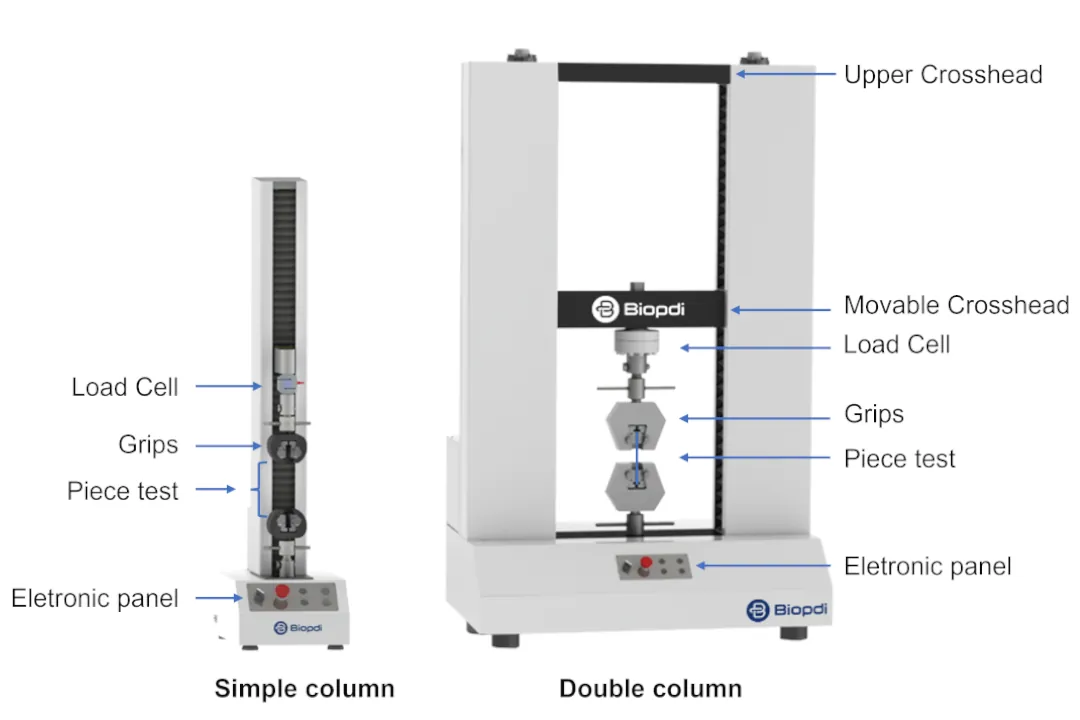
Universal Testing Machine used in the shear test
Procedures for obtaining the Shear Testing using the Universal Testing Machine
btaining shear testing data using a Universal Testing Machine (UTM) involves a series of precise steps. The specifics of these steps may vary depending on the exact type of shear test being performed, the nature of the material under investigation, and the standard being followed (like those from ASTM or ISO).
However, here is a generalized procedure that typically applies to most shear tests using a UTM:
- Sample Preparation: First, the specimen to be tested is prepared according to the specifications of the test standard. For shear tests, the specimen often has a specific shape, size, and orientation depending on the test type (e.g., single lap, double lap, etc.).
- Setting Up the Test: The prepared specimen is then mounted onto the UTM. This often involves securing the specimen within the grips or fixtures of the machine that have been designed specifically for the particular shear test. The grips/fixtures must hold the specimen securely to prevent slipping and avoid introducing additional stresses.
- Calibrating the Machine: Prior to the test, the UTM should be calibrated to ensure the accuracy of the results. This involves checking the load cell, extensometer (if used), and other related instruments.
- Setting the Parameters: Next, the test parameters are set in the control unit. This includes the loading rate, maximum load, or strain rate, among others.
- Running the Test: The UTM then applies load to the specimen at the predefined rate. In shear testing, this load application causes the specimen to deform (or break) in shear.
- Data Collection: As the load is applied, the UTM records the load and corresponding deformation. If an extensometer is used, it measures the strain in the specimen.
- Analysis: Once the test is completed, the data is analyzed to determine the shear properties of the material. This often involves plotting a load vs. deformation (or stress vs. strain) graph and calculating the shear strength, and possibly the shear modulus.
- Reporting: The final step is to document the results. This report typically includes the initial material properties, test parameters, raw data, calculated results, and any observations made during testing.
Please note that for accurate and reliable results, the UTM should be regularly calibrated, and all tests should be conducted by trained personnel following the appropriate testing standards. Additionally, for safety, appropriate personal protective equipment should be worn during testing.
Data obtained in the Shear Testing using the Universal Testing Machine
Shear testing using a Universal Testing Machine (UTM) provides valuable data that helps determine the mechanical behavior of a material under shear stress. The type of data obtained can vary depending on the specific shear test used, but generally includes the following:
- Load vs. Deformation Data: This is the fundamental raw data obtained from the UTM. The machine measures and records the applied load (or force) and the corresponding deformation (or displacement) of the specimen throughout the test.
- Shear Stress vs. Shear Strain Curve: The raw data is typically used to plot a shear stress vs. shear strain curve, which provides crucial information about the material’s response to shear loading. The shape of this curve can tell you a lot about the material’s behavior. For instance, a linear initial portion indicates elastic deformation, while the point at which the curve deviates from linearity represents the yield point.
- Shear Strength: This is the maximum shear stress that the material can withstand before failure. It is calculated by dividing the maximum load achieved during the test by the original cross-sectional area of the specimen. It is one of the most important results obtained from a shear test, as it gives an indication of the material’s ability to resist shear loading.
- Shear Modulus (or Modulus of Rigidity): If the test setup allows for the measurement of shear strain (for instance, by using an extensometer), the shear modulus can be calculated. This is the ratio of shear stress to shear strain in the elastic (or linear) region of the stress-strain curve. It gives an indication of the material’s stiffness under shear loading.
- Yield Shear Stress: Some materials exhibit a yield point in their shear stress-shear strain curve, which can be identified and reported. This is the shear stress at which the material begins to deform plastically (i.e., the deformation is no longer fully recoverable).
- Other Observations: Any unusual behavior observed during the test, such as the mode of failure, color changes, or sound emitted, may also be recorded, as these could provide additional insights about the material’s behavior under shear stress.
Specimen used for shear testing in a Universal Testing Machine
The sample or specimen used for shear testing in a Universal Testing Machine (UTM) will depend on the specific type of shear test being performed and the material being tested. Here are some general guidelines for different types of materials and shear tests:
- Metallic Materials: The most common type of sample for shear testing of metals is a short, cylindrical rod or a rectangular bar. The exact size and shape may vary depending on the testing standard being followed.
- Polymeric Materials: For polymers, specimens are often taken in the shape of a “dog bone” with a narrow midsection and wider ends to ensure uniform shear stress distribution. Some tests may use a punch-type specimen, especially for thin sheets of polymers.
- Ceramic Materials: Due to their brittle nature, ceramic materials are often tested using a disc or plate-shaped specimen.
- Composite Materials: The shape and orientation of composite specimens depend on the type of composite and the specific property of interest. Common shapes include straight bars, L-shaped, or I-shaped specimens.
For lap shear tests, often used for adhesives and bonded materials, the specimen typically consists of two plates bonded together with the adhesive, arranged so that a lap joint is created. The test can be single lap, double lap, or other variants.
For most shear tests, the specimen is designed and oriented in such a way that the load applied by the UTM induces a shear stress in the material.
The preparation of the specimen is crucial and must be done carefully to ensure accurate and reproducible results. Specimens should be free from defects and their dimensions measured precisely. The specimen’s size, shape, and orientation should adhere to the guidelines provided by the relevant testing standards, such as those from ASTM or ISO.
Standards for conducting shear testing
The International Organization for Standardization (ISO) and the American Society for Testing and Materials (ASTM) have established several standards for conducting shear testing. These standards provide guidelines to ensure consistency, reliability, and accuracy in testing results.
Here are five main standards from each organization for shear testing:
ISO Standards:
- ISO 14129: Fibre-reinforced plastic composites — Determination of the in-plane shear stress/shear strain response, including the in-plane shear modulus and strength, by the ±45° tension test method.
- ISO 17892-12: Geotechnical investigation and testing — Laboratory testing of soil — Part 12: Determination of liquid and plastic limits.
- ISO 15114: Fibre-reinforced plastic composites — Determination of the in-plane shear stress/shear strain response, including the in-plane shear modulus and strength, by the single-lap shear method.
- ISO 11003-2: Adhesives — Determination of shear behaviour of structural adhesives — Part 2: Thick-adherend metal-to-metal test method.
- ISO 10447: Resistance welding — Testing of welds — Peel and chisel testing of resistance spot and projection welds.
ASTM Standards:
- ASTM D732-17 – Standard Test Method for Shear Strength of Plastics by Punch Tool. This test measures the shear properties of rigid plastics and reinforced plastics in the form of standard disks.
- ASTM D1002-10 – Standard Test Method for Apparent Shear Strength of Single-Lap-Joint Adhesively Bonded Metal Specimens by Tension Loading (Metal-to-Metal).
- ASTM D5379 / D5379M-12 – Standard Test Method for Shear Properties of Composite Materials by the V-Notched Beam Method.
- ASTM D4255 / D4255M-16e1 – Standard Test Method for In-Plane Shear Properties of Polymer Matrix Composite Materials by the Rail Shear Method.
- ASTM D7078 / D7078M-12 – Standard Test Method for Shear Properties of Composite Materials by V-Notch Rail Shear Method.
It’s important to note that each standard is tailored for a specific type of material and test condition. The selection of the appropriate standard depends on the material being tested, the specific shear property of interest, and the testing equipment available. As always, for precise testing and interpretation of results, consult with a materials testing expert or a certified laboratory.
Additional information about Shear Testing
Shear testing is a foundational aspect of material science and engineering, offering a comprehensive understanding of how materials behave under shear stress. Here are some additional points of interest:
- Test Environment: The environment in which shear tests are conducted can significantly impact the results. Factors such as temperature, humidity, and the rate of load application can affect the material’s shear properties. As a result, testing standards often specify the conditions under which tests should be conducted.
- Test Accuracy: The accuracy of shear testing results can be influenced by various factors, including the precision of the testing equipment, the quality and preparation of the test specimen, and the adherence to testing standards. Care should be taken at each stage of the testing process to ensure accurate and reproducible results.
- Sample Homogeneity: The homogeneity of the sample plays a vital role in the accuracy of the shear testing results. Inconsistencies in the material, such as inclusions, voids, or grain variations, can cause local stress concentrations that affect the shear strength value.
- Anisotropy: Some materials, especially those with a defined grain structure or composite materials, may have different properties in different directions – a characteristic known as anisotropy. In such cases, shear testing may need to be performed in several directions to fully characterize the material.
- Real-world Application: While shear testing provides vital data about a material’s properties, it’s essential to remember that real-world conditions can often be more complex. For example, a component in a machine may experience a combination of tension, compression, and shear stresses simultaneously.
- Material Failure: Understanding the shear strength of materials is crucial for predicting potential failure modes. When a material fails in shear, it often does so along a plane that is parallel to the applied forces. This can help engineers anticipate and prevent catastrophic failures in real-world applications.
Shear testing continues to evolve with advancements in technology, leading to more accurate, reliable, and faster testing procedures. As more sophisticated materials are developed, especially in industries like aerospace, automotive, and electronics, the role of shear testing will continue to grow in importance.
Main applications of Shear Testing
Shear testing plays a pivotal role in numerous sectors and applications. Its fundamental purpose is to ascertain the shear properties of materials, which helps engineers, researchers, and designers make informed decisions when selecting materials for specific applications.
Here are some of the main applications of shear testing:
- Material Selection: Shear testing helps in selecting materials for applications where shear forces are prevalent. For instance, in selecting materials for gears, shafts, and fasteners, which experience substantial shear stresses during operation.
- Structural Engineering: In the construction industry, shear tests are used to determine the shear strength of building materials like concrete, wood, and steel. The results can help predict how these materials will perform under shear stress, vital in structural integrity assessments.
- Automotive and Aerospace Industries: Shear tests are often used in automotive and aerospace applications to assess the shear strength of materials used in manufacturing components such as engine parts, structural frames, and body panels.
- Adhesive Bonding: Shear testing is pivotal when assessing the performance of adhesives. The tests can determine the strength and durability of adhesive bonds, crucial in industries such as electronics, automotive, and construction.
- Geotechnical Engineering: In geotechnical engineering, shear tests help evaluate the shear strength of soil and rock, which is crucial in designing foundations, retaining walls, and slopes.
- Composite Materials: For composite materials, shear testing provides insights into how the different components of a composite work together under shear stress. This is key in industries like aerospace, marine, and sporting goods where composites are commonly used.
- Quality Control and Assurance: Manufacturing industries use shear testing as a part of their quality control process to ensure that products meet the required specifications and standards.
- Material Development and Research: In material science research, shear testing is used to understand the behavior of new materials or to compare different materials.
These are just a few examples of how shear testing is applied. The results from these tests form a crucial part of the decision-making process in a variety of fields, making shear testing an essential tool in material science and engineering.
Conclusion
Shear testing is an invaluable technique in material science and engineering, playing a critical role in a wide array of applications, from construction and aerospace to automotive and geotechnical engineering. It offers a nuanced understanding of how materials respond to shear stress, ensuring safe and efficient design and implementation in real-world applications.
In this exploration, we’ve understood the types of shear tests, their importance, and how they are conducted, with a special focus on the Universal Testing Machine. We’ve also considered the various ISO and ASTM standards guiding these tests and the types of specimens used.
This knowledge supports informed decision-making in material selection, quality control, and new material development. Remember, while shear testing offers valuable insights, real-world conditions can often be complex, reinforcing the need for comprehensive material testing and analysis.
FAQs
How does shear testing work?
Shear testing works by applying a force to a material that is parallel to the surface (or plane) of the material until it fails or breaks. This allows the shear strength, the measure of the material’s ability to resist this type of force, to be determined.
What is the ASTM test for shear?
The ASTM D5379 is a standard test method for shear properties of composite materials by the V-notched beam method. The ASTM D732 is another standard that specifies a punch tool shear test for plastic materials.
What is shear strength testing?
Shear strength testing involves determining the maximum shear stress that a material can withstand before failure occurs. It’s a vital parameter in engineering applications where materials are subjected to shear forces.
What is the difference between tensile test and shear test?
While both are mechanical tests that determine a material’s strength, a tensile test measures the force required to pull something such as a rope, wire, or beam to the point where it breaks. A shear test, on the other hand, measures the resistance of a material to being sheared (forces applied parallel to the material surface).
Why is shear strength important?
Shear strength is crucial as it helps engineers determine if a material can withstand the forces it will experience in its intended use. Knowing a material’s shear strength is key in ensuring structural integrity and safety in numerous applications.
What are the advantages of shear test?
Shear testing provides crucial data about a material’s ability to resist shear forces. This helps in material selection, structural design, quality control, and failure analysis. It’s a relatively straightforward test and can be applied to a broad range of materials.
How do you measure shear rate?
In fluid dynamics, shear rate is calculated by dividing the velocity gradient by the distance over which the change in velocity occurs. It’s typically measured in reciprocal seconds (s^-1).
What is the shear strength of steel?
The shear strength of steel depends on the specific type of steel, but it is generally around 60% of its ultimate tensile strength. For instance, for mild steel, the ultimate tensile strength is about 370-500 MPa, so the shear strength would be around 220-300 MPa.
How many types of shear tests are there?
There are three primary types of shear tests: Single Shear, Double Shear, and Torsional Shear tests. For adhesive materials, there are additional categories like Single Lap, Double Lap, Double Butt Lap, Bevelled Lap, and Joggle Lap.
What is shear strength for dummies?
Shear strength is a measure of how much shear stress – a force that causes layers or parts to slide upon each other in opposite directions – a material can handle before it deforms, changes shape, or breaks.
What are some examples of shear?
Examples of shear include the force exerted by scissors cutting paper, the process of soil shifting during an earthquake, and the forces that cause tectonic plates to slide past each other.
What is an example of shear strength?
An example of shear strength could be the maximum force a steel beam can handle before it begins to deform when forces are applied parallel to its cross-section, such as in a building during high winds.
What is the standard shear strength?
The “standard” shear strength depends on the specific material in question, as different materials have different shear strengths. These values are often specified in relevant ISO or ASTM standards for specific materials.
What is allowable shear strength?
Allowable shear strength is the maximum shear stress that a material or structural element is allowed to carry in actual use, considering a safety factor. This is typically less than the ultimate shear strength to prevent failure.
See more relevant posts
TENSILE TEST
Tensile testing is a crucial mechanical test used to evaluate the strength and ductility of materials. It involves applying a controlled force. See more
COMPRESSION TEST
Compression testing is a fundamental evaluation method employed to assess a material's ability to withstand compressive forces. See more
SHEAR TEST
Shear testing examines a material's response to forces acting parallel to its surface. By applying a force that causes one part of the material. See more
BEND TEST
Bend testing is a mechanical test that determines a material's flexibility and resistance to fracture under bending forces. See more
FLEXURAL TEST
Flexural testing, also known as the three-point bend test, is employed to measure a material's resistance to bending or flexural stress. See more
FRICTION TEST
Coefficient of friction test measures the amount of resistance between two surfaces in contact when one moves relative to the other. See more
TEAR TEST
Tear test determines a material's resistance to tearing forces, often encountered in applications involving thin films, fabrics. See more
PEEL TEST
Peel testing evaluates the strength of adhesion between two materials, typically an adhesive and a substrate. The test involves separating. See more
BOND TEST
Bond test measures the strength of a bond between two materials. It's used in adhesive and weld test. It helps in determining the reliability of joints and interfaces. See more
INDENTATION TEST
Indentation Force Deflection (IFD) is used to characterize the cushioning or compressive properties of a material, especially foams and soft polymers. See more
FRACTURE TEST
Fracture toughness is a material's ability to resist crack propagation. This property is vital for assessing a material's suitability for applications where structural. See more
PUNCTURE TEST
Puncture test examines a material's ability to withstand penetration by sharp objects or forces. This test to evaluate puncture strength and design materials. See more
CRUSH TEST
Crush resistance test measures a material's ability to resist deformation, particularly in terms of compressive force. See more
TORSION TEST
Torsion testing is a critical method in materials engineering, examining how products and materials behave under twisting forces. See more
AXIAL TORSION TEST
Axial torsion test examines a material's behavior when subjected to simultaneous axial and torsional loads. This test to study shear stress. See more
FATIGUE TEST
Fatigue Testing is the evaluation of a material's endurance and failure under repeated stress and cyclic loading conditions. See more.

Author: Mardoqueu M. Costa (Entrepreneur, researcher and writer). I have been working for several years in materials science and engineering and biomedical engineering with emphasis on Entrepreneurship. My focus is on the development of equipment, software, mechanical tests, and the evaluation and creation of new businesses. As a researcher and writer, I have contributed to scientific publications and patents, also working as a technical-scientific consultant for several companies. This integrated approach reflects my commitment to innovation and impact in the technology industry.
Contact us
Phones:
+1 (781) 328 - 2010
sales@biopdi.com
Address:
2 Burlington Woods Dr, Burlington, Massachusetts, United States


